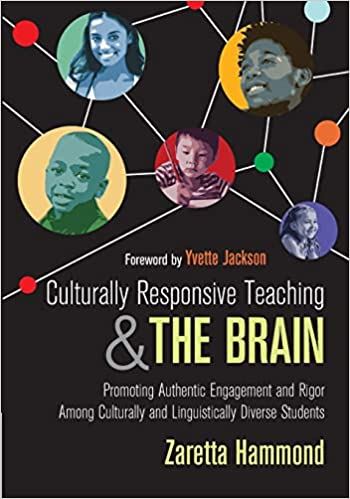Authored by Laura Lewis VATESOL 1st Vice President

“We each must do the ‘inside-out’ work required: developing the right mindset, engaging in self-reflection, checking our implicit biases, practicing social-emotional awareness, and holding an inquiry stance regarding the impact
I am a middle school ESOL teacher in the Albemarle County Public School district. In September of 2019 I completed the work to earn a micro-credential in Culturally Responsive Teaching. Our school district had begun this program several years earlier. These are some of the reflections I put in my final essay towards completion of the credential. of our interactions on students (p.53).”
... I am sitting in the dining room of the Double Tree staring at the “ACPS Culturally Responsive Educator Self-Assessment 2018-19” at a table of colleagues from Burley, including my co-ESOL teacher. Up until this year I have been the only ESOL teacher at Burley. Having another teacher to carry our caseload of ELLs has given me the breathing space to be at this meeting, to consider working toward a micro-credential in Culturally Responsive Teaching (CRT). I want answers to today’s essential questions:
How can I use my understanding of the different layers of culture to make my teaching more culturally relevant to students?
What is my own cultural lens and how does it either connect or disconnect to the culture of my students?
How will you make intentional shifts in your practice to build learning shifts in your practice to build learning partnerships with students? With Parents?
At the center of this training is a book, Culturally Responsive Teaching & The Brain: Promoting Authentic Engagement and Rigor Among Culturally and Linguistically Diverse Students by Zaretta Hammond. The title and table of contents promises all the things I want to achieve as a teacher: to be responsive to my students culture; to consider neuroscience and what the findings of brain research have to say about engagement and integration of new knowledge; to authentically engage my students while setting high, rigorous expectations; to teach the students that walk through my classroom door every day--culturally and linguistically diverse people.
I have made changes because of Hammond’s book. In addition to reading in group: we have wide-ranging discussion, I don’t really implement a “raise-your-hand” policy unless it gets out of control; I allow music--either listening with earphones while writing or working on a poster” or I’ll play music from my spotify account while students are working together; I allow students to get up and move around and visit each other during brain breaks; We play jeopardy and kahoot games as a way to study vocabulary, reading comprehension strategies and spelling words. “Collectivist cultural practices have reinforced this natural tendency and deepen the brain’s hardwiring for relationships. This system encourages social bonding through the release of hormones such as oxytocin when we are in the presence of others. Social activities such as laughing, talking, and even hugging release oxytocin, the bonding hormone (p.44).”
In conclusion, CRT Characteristic #2 states “CR teachers maintain high expectations and support all students to achieve rigorous academic goals.” I have worked to build trust with my students. I have worked to select texts and create assignments that ask them to reflect on the world around them and their own lives. I feel the connections my students are making show that they are reading to learn and connecting with their reading. For students who are reading several grades below their peers this is a huge success. During our “jigsaw” students had to read to learn and then report what they had learned with their partner to their peers using a poster they had created (Appendix: Refugee: Jigsaw posters). What I have learned from my students is the importance of play and partner and small group work. Next year, I will focus on the idea of integrating aspects of play into all of our cognitive routines to help students “chew on” content for active processing.
Citations:
Hammond, Z. (2015). Culturally responsive teaching and the brain: Promoting authentic engagement and rigor among culturally and linguistically diverse students. Thousand Oaks, California: Corwin.